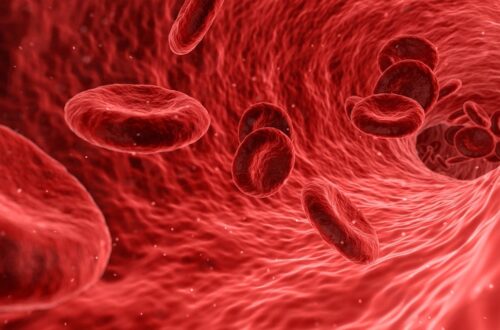
21 of The Best Interesting Facts About Men
Interesting facts about men
This article will explore some interesting facts about men you may not have known. From biological differences to cultural influences, be prepared to learn something new about this gender!
Men have long been the subject of fascination and mystery. Certain traits make them unique, sometimes even fascinating. Men are an intriguing group to study from their physical capabilities to their psychology.
Here are some interesting facts about men that you may not know:
Did you know that men in their twenties produce 20 times higher levels of testosterone than women? Testosterone is the hormone responsible for giving men physical strength and improving muscle mass.
It also contributes to their libido, so it’s not surprising why they’re often seen as the more passionate sex.
Another fascinating fact about men is that they tend to express emotions differently from women.
While most women verbalize their feelings and share with others openly, many men prefer to keep things inside or express themselves through activities such as sports or other hobbies instead of talking directly about them.
The life expectancy of men

Life expectancy, Men generally live shorter lives than women, some studies suggest this could be due to genetic factors rather than lifestyle choices such as smoking or drinking.
This suggests that genetics play a large role in determining how long someone lives—a finding that could lead to new treatments for diseases and conditions associated with aging!
Men have a shorter life expectancy than women, on average. A man born in the United States in 2019 can expect to live an average of 76 years, while a woman born the same year can expect to live 81 years.
This disparity is thought to be linked to lifestyle factors such as smoking and diet, as men are more likely than women to indulge in unhealthy behaviors.
In addition, men may face higher risks from certain medical conditions due to their physiology; for example, prostate cancer is one of the leading causes of death among men between the ages of 55 and 64.
Another interesting fact about male life expectancy is that it varies greatly depending on race.
According to data from 2017-2019, white men are expected to live until 79 years old on average compared with 73 years for black men.
Other races also show a discrepancy in life expectancy; Hispanic males have an average life expectancy of 80 years compared with 75 for Native American males.
This suggests that systemic issues such as access to healthcare are contributing factors when it comes to differences in male life expectancy across racial groups.
Further ado, educational level plays a role in longevity; those who finish college can expect an extra 5-7 years of life compared with those without any postsecondary education whose lifespans are cut short by 2-4 years on average according to recent studies.
The implication here is that improving access to and quality of education could help reduce disparities in life expectancy among different demographic groups within the US population.
Facts about the male body

The male body is an incredibly complex and unique structure. For instance, men have more muscle mass than women due to higher levels of testosterone.
Men’s hearts beat at a faster rate than women’s, which helps deliver oxygenated blood throughout the body more quickly.
Additionally, men’s bones are denser and stronger than those of women, thanks to higher levels of calcium in their bodies.
Men also tend to be taller than women on average, although this varies greatly depending on individual genetics as well as environmental factors such as diet and exercise.
Furthermore, men generally have larger lungs than women which allows them to take in more air with each breath. This can help when engaging in strenuous physical activity or sports.
Read my article Interesting Facts About Nike next.
Finally, it’s interesting to note that men typically have a greater life expectancy than women due largely in part to their broader range of immune system responses compared to their female counterparts.
This is thought to be because testosterone plays a role in improving the human immune system response against certain diseases and infections.
Interesting facts about men – The adam’s apple
The Adam’s apple is a small lump of cartilage located at the base of the neck in some people, usually more prominent in males than females. It is named after the biblical figure Adam, who was said to have had one.
This anatomical structure serves as an anchor point for muscles that aid in speaking, swallowing, and facial expressions. Interestingly enough, it has no known purpose other than these functions.
In medical terms, it is called the laryngeal prominence and is made up of two pieces of cartilage that are connected by a thin piece of connective tissue.
Its size varies from person to person and can even be affected by hormones or age. Some men may notice that their Adam’s apple grows larger during puberty or when taking testosterone supplements.
However, this does not necessarily mean they will grow any taller as the increase in size comes from hormonal changes rather than bone growth.
Though not much else is known about this part of the body other than its location and use in certain activities, it remains an important part of anatomy due to its role in speech and facial expressions.
Furthermore, many cultures find it to be a significant part of identity with men often growing proud when theirs becomes visible during puberty and producing deeper voices – signifying their transition into adulthood!
Men and prostate cancer
Prostate cancer is the most common cancer in men. It usually affects men over the age of 50, but it can occur in younger men as well. The chance of a man developing prostate cancer increases with age.
Approximately one in nine men will be diagnosed with prostate cancer during their lifetime.
Early detection and treatment are key to successful outcomes for those affected by prostate cancer, so all men need to be aware of the risks and symptoms associated with this disease.
The exact cause of prostate cancer is unknown, but certain factors may increase a man’s risk, such as family history and race or ethnicity.
African American men have the highest rate of diagnosis compared to other ethnic groups, while Asian American men have the lowest rate.
Other possible risk factors include diet and lifestyle choices like smoking and drinking alcohol. Being overweight or obese has also been linked to an increased risk for this type of cancer.
Additionally, exposure to certain chemicals or radiation can put a person at greater risk for developing prostate cancer later on in life.
All men need to talk to their doctor about any potential signs or symptoms related to prostate cancer that they may be experiencing—such as difficulty urinating—so that appropriate testing can take place if needed.
Being proactive about preventive measures like regular screenings can help catch any potential issues early which can lead to better treatment outcomes overall.
Heart disease in men

Heart disease is the leading cause of death among men in the United States.
Men are more likely than women to have heart attacks at an earlier age before they even reach their 50s, the average age of a first heart attack is 65.6 years old for men and 72 years old for women.
The risk of a man dying from heart disease is twice that of a woman. Men are also more likely than women to have high blood pressure and high cholesterol, two major risk factors for heart disease.
In addition, men tend to experience more severe symptoms during a heart attack and are more prone to sudden cardiac death than women.
The risk factors for developing heart disease in men are largely similar to those for women, including smoking, obesity, hypertension, and high cholesterol levels.
However, some additional factors can increase a man’s risk for developing heart disease as well, such as diabetes or having a family history of early-onset cardiovascular disease.
It’s important to be aware of the risks associated with male-specific conditions like erectile dysfunction or testicular cancer which can also lead to an increased risk of coronary artery diseases.
Finally, healthy lifestyle modifications like regular physical activity and adopting healthy eating habits can help lower the chances of developing any kind of cardiovascular disease regardless of gender-specific factors.
Male sex facts
Male sex drive peaks in the late teens and early twenties, while women’s libidos peak in their thirties. This is thought to be because men produce more testosterone at a younger age than women do.
On average, men think about sex every seven seconds. Men are also more likely to view pornography than women, with around 40% of internet searches being related to adult material.
Men typically take longer than women to reach orgasm during sexual intercourse, but can often experience multiple orgasms in a single session with proper stimulation.
Additionally, studies have found that men typically require more time for foreplay and physical contact before becoming aroused during intercourse compared to women.
Finally, male erections are mostly caused by mental stimulation or visual cues rather than physical touch alone.
Amazing facts about yeast infection in men
Yeast infections in men are often overlooked and underdiagnosed. While women experience yeast infections more commonly, it is estimated that up to 15% of men may suffer from a yeast infection at some point during their lifetime.
Men may be infected without experiencing any symptoms, but the most common symptom includes redness and itching around the head of the penis.
Yeast infections can also spread to other areas such as the armpits or stomach area if left untreated.
Men who have diabetes or whose immune system is weakened are at higher risk for developing a yeast infection.
A doctor should always be consulted for diagnosis and treatment options when it comes to dealing with this condition.
When it comes to prevention, avoiding tight-fitting clothing and keeping the genital area clean can help reduce one’s risk of contracting a yeast infection.
Additionally, eating probiotic-rich foods like yogurt, kefir, sauerkraut, kimchi or miso soup can help balance out bacteria levels in your gut which will reduce your chances of getting an infection caused by an imbalance of yeasts in the body.
The index finger

The index finger is the most dominant digit of the hand, and it’s no wonder: men have longer index fingers than their ring fingers on average.
This unique trait is known as a “2D:4D ratio”, which refers to the length of the second digit (index) compared to the fourth digit (ring finger).
Men typically have higher 2D:4D ratios than women, making men’s index fingers proportionally longer than women’s.
Research has also shown that higher 2D:4D ratios may be linked to better performance in sports such as baseball or soccer.
Additionally, studies found that men with higher 2D:4Ds are more likely to engage in risk-taking behavior and those with lower ratios tend to be more cautious and conservative.
The significance of this ratio may not be fully understood yet, but it certainly makes for an interesting fact about male anatomy!
Interesting facts about men – The average height of men
According to the World Health Organization, the average height for an adult male is 5’9” (175 cm). This can vary based on ethnicity and geographic region.
For instance, men in the United States tend to be slightly taller than those in other parts of the world. The tallest nation is the Netherlands with an average height of 6’0” (183 cm) for men.
On the flip side, Southeast Asian nations such as Indonesia have an average height of 5’3” (161 cm).
Height also differs between socioeconomic groups within a single country. Generally speaking, people from higher-income backgrounds tend to be taller due to better nutrition and healthcare access.
Additionally, tall stature can be hereditary as well; tall parents are more likely to have tall children.
Studies also suggest that being at least moderately tall may come with certain benefits such as improved success in sports and even career prospects!
Attention Deficit Disorder in Men
Attention Deficit Disorder (ADD) is a condition that often affects men more than women. It is estimated that 4.4 million adult men in the United States are living with ADD.
This disorder can make it difficult for people to concentrate and stay organized, pay close attention to detail, or complete tasks on time.
Men tend to display different symptoms of ADD than women do, such as increased restlessness, impulsivity, irritability, aggression, and difficulty controlling emotions.
Additionally, men are more likely to experience substance abuse or addiction as a result of ADD due to their difficulty managing these issues without professional help.
The good news is that treatments for ADD exist and can be effective in controlling symptoms so that individuals may lead normal lives.
These include medications like stimulants or non-stimulants cognitive behavioral therapy and lifestyle modifications like getting enough sleep and eating healthily.
With the right care plan tailored to each individual’s needs by a mental health specialist, successful management of this disorder is possible.
Interesting facts about Boy Babies

Boy babies come with some interesting facts that may surprise you! For example, did you know that boy babies are born with more than twice the amount of testosterone as girl babies?
This hormone affects physical and emotional development, giving boys a head start in terms of developing musculature. In addition, boy babies tend to be heavier and longer at birth than baby girls.
They may also cry differently and take less time to be soothed because they are used to their mother’s heartbeat in the womb.
Boys usually smile earlier than girls do too! It’s said that boys can have an easier time connecting emotionally through touch and physical contact.
Finally, male newborns often have a greater appetite than female ones.
What do scientists know about the male brain?
The brains of adult men and women are different, just like the rest of their bodies.
These differences can be attributed to numerous factors including hormonal influences, biological influences, and social influences.
Scientists have conducted extensive research into the male brain and how it differs from female brains, and have gathered a great deal of information on the subject.
It is believed that men have thicker cortices than women, which could explain why males tend to be better at spatial reasoning such as working with maps and solving jigsaw puzzles.
Additionally, scientific evidence suggests that men typically have a larger amygdala, a region of the brain responsible for processing fear and other emotions.
This could explain why males are more likely to take risks when compared to females.
Another area of research within the field of male brains focuses on differences in behavior between genders.
Studies suggest that men are more prone to impulsive behaviors and may be less likely to process social cues accurately or display empathy towards others.
Conversely, women may be better at multitasking or responding intuitively in certain situations due to the higher density of nerve cells in certain parts of the brain.
Ultimately, both sexes possess unique advantages and disadvantages in different areas- it’s just a matter of understanding how each gender processes information differently to determine who has an edge over whom under certain circumstances.
What are some interesting facts about men and their relationships?
Men tend to have more superficial relationships, oftentimes preferring quantity over quality. This could be due to men being more focused on physical appearance and status when it comes to relationships.
Men are also less likely to discuss their feelings in comparison to women, which can cause communication issues within a relationship.
According to research, men may be struggling with an inability to control their emotions which leads them to destructive behaviors such as substance abuse or aggression.
Men need to recognize the importance of emotional regulation and healthy communication for relationships to thrive and last.
Men’s brains are wired differently from women’s brains when it comes to relationships, which can lead them down a different path toward intimacy than women.
Studies have found that men become more aroused by visuals rather than words, whereas women tend towards the opposite.
This could explain why some men find it difficult to express their emotions adequately in relationships and why they often rely on activities rather than talking about feelings as a way of bonding with their partners.
In terms of commitment, studies have found that men take longer than women do before deciding if they want something serious out of a relationship; this is possible because they prioritize sex over emotion when considering whether or not they will commit long-term or not.
What are some interesting facts about masculinity?

Masculinity is often an under-discussed topic, but it’s worth exploring the fascinating facts about what it means to be a man.
For example, men have larger hearts than women, but men’s hearts beat faster because they are usually more active.
Furthermore, men generally produce more sweat than women due to their higher body temperature and activity levels.
In addition, men produce around 10 times more testosterone than women and this hormone helps build muscle mass and strength.
Finally, studies suggest that men tend to be better at spatial tasks such as throwing objects accurately or knowing their way around a map while women tend to excel in language-based skills like reading comprehension and memory recall.
These interesting facts show how masculine mindsets can differ from femininity in both physical and mental areas.
What are the most common myths about men?
One of the most pervasive myths about men is that they are not as emotionally intelligent or sensitive as women.
This myth has been around for centuries and is still taught in some cultures today.
The reality is that men, like women, experience a range of emotions, and their emotional intelligence should not be underestimated.
Studies have shown that men are just as capable of expressing and managing their feelings as women are.
Another common myth about men is that they are ill-equipped to handle household duties or childcare responsibilities.
This stereotype suggests that these tasks are better handled by women only; however, there’s no evidence to suggest this notion is true.
Men can be just as adept at running a household and caring for children as their female counterparts if allowed to do so.
Finally, one of the more commonly accepted myths about men is that they don’t express themselves openly in relationships or show vulnerability towards others.
Contrary to popular belief, many men have rich inner lives filled with complex emotions which they may choose not to share due to fear or shame surrounding vulnerability in relationships.
Being open about feelings can help build stronger connections between partners, regardless of gender identity.
Interesting facts about men – Men’s health week
Men’s health week is an important awareness campaign that seeks to highlight the unique problems men face when it comes to their health.
The Centers for Disease Control and Prevention (CDC) reports that men are more likely than women to die from nine of the top 10 most common causes of death, including heart disease, cancer, chronic lower respiratory diseases, stroke, suicide, and unintentional injuries.
In addition to having a higher mortality rate for many common illnesses, men are also less likely than women to have regular check-ups or seek medical attention when they do not feel well.
Men’s Health Week helps increase awareness about the importance of preventive care, early detection, and regular doctor visits for men.
The goal is also to raise awareness about specific conditions that disproportionately affect men such as prostate cancer and testicular cancer as well as encourage lifestyle changes related to eating healthier foods and getting enough exercise.
Doing so can help reduce their chances of developing these serious conditions in the future.
Interesting facts about men
Successful men in New York City

New York City is home to some of the most influential and successful men in the world. It has been a long-time hub for finance, entertainment, culture, and more.
Many famous businessmen have come out of New York, including Warren Buffett, Donald Trump, and Michael Bloomberg.
There are also many iconic athletes who have made their mark in NYC such as Derek Jeter and Carmelo Anthony.
It’s no surprise that NYC attracts ambitious men from all over the world looking to make an impact on society.
The Big Apple is also home to some of the most powerful cultural figures in history. Men like Martin Luther King Jr., Muhammad Ali, and David Bowie have all lived or performed in New York during their lifetime.
All three of these figures were not only iconic but played an important role in shaping our current understanding of race relations, civil rights movements, music industry standards, and more.
Finally, it’s important to remember that there are many everyday unsung heroes living throughout New York City who is making a difference every day through grassroots efforts such as mentorship programs or community initiatives that strive to make life better for those around them.
These unsung heroes often go unrecognized yet they keep pushing forward with their passions despite any struggles they may face.
Woman Facts
Women are often considered the less physically strong gender, but that’s not always the case. Studies have shown that women can be just as strong as men in certain areas.
For example, female athletes are often seen outperforming their male counterparts in endurance sports such as running and swimming.
Furthermore, women tend to cope better with pain than men – a study conducted by Oxford University showed that women were able to tolerate more pain than men during experiments involving electric shocks.
An ability to multitask
Another lesser-known fact about women is their superior ability to multitask, something which has long been attributed to them due to their innate nurturing instinct.
Research has revealed that this multitasking ability may be rooted in biology – when a woman is presented with multiple tasks at once her brain is capable of quickly switching between them and dealing with each one effectively.
This makes women uniquely qualified for jobs requiring quick thinking and adaptability.
Finally, it’s interesting to note that most research suggests both genders get an equal amount of sleep on average – contrary to popular belief, some studies have found that while individual sleeping patterns vary greatly between genders they tend to even out overall when looking at large sets of data.
Please share this article with your friends, thank you.





One Comment
Pingback: